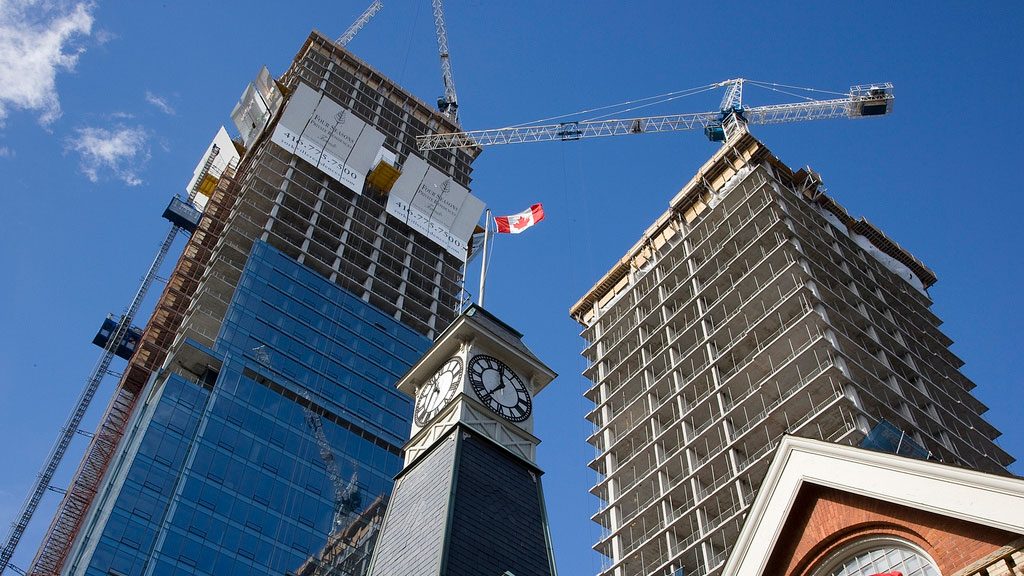Home ownership remains out of reach for many Canadians living in major cities and that is only going to get worse if nothing is done to address the issue of housing supply.
That was the message from a panel of experts at the Scotiabank Affordable Housing Summit session, Getting Ready For 2030 – Addressing The Complexities Of Demand, held virtually recently.
“In looking forward to 2030, if we maintain the status quo in terms of some of the challenges on availability and affordability, I think it’s setting us up for a really fundamental generational rift between the ‘have’ and the ‘have nots’ on the housing front,” Andrew Ramlo, vice-president of Rennie, told attendees.
While a growing number of people are now moving into the household and family formation stages of the lifecycle, the bulk of the post war boom age are moving into the empty nester stage.
“Some people are going to downsize, but this notion of aging in place is talked about a lot which, from a complexities of demand side, means that if we have a growth in the family formation stage through our kids and immigration but not a turnover in the market, we are going to need to add dwelling units to accommodate them,” Ramlo said.
“What this means is existing issues of housing availability and affordability that are currently being experienced across Canada will only grow if the supply of new housing does not exceed this notion of expected demand.”
Mike Yorke, president of the Carpenters’ District Council of Ontario, said housing needs to be built to accommodate future growth but at the same time, the industry is facing a shortage of skilled workers.
“We’re getting calls every day from contractors, drywallers, concrete forming, trim, scaffolding, looking for workers, so we know that’s a crisis right now,” he said. “One way we’re looking at it is we need to go to the world market and bring in skilled people. Secondly, we can have mobility within Canada so workers that may be unemployed on the East Coast or the west, there are jobs for them here in Toronto. The issue is it’s so expensive to move here for that employment and to maintain two homes. There has to be some government support for that. Thirdly, and certainly not last in importance, are the apprenticeship programs across the county.”
Paul Morassutti, vice chairman of CBRE, said one of the reasons affordability has worsened is the government has increased immigration targets without pairing that policy with a real plan to provide more housing for all those people coming in. Beginning in 2015 house prices began to ramp up sharply while household income rose only modestly, he explained.
“You’ll often hear people say no one can afford to live in Toronto anymore, which is clearly not true. Lots of people can afford to live here,” he said. “The real issue is that the gap between those who can afford to live here and those who can’t is growing. If we’re not careful the danger of course is we could end up with a Manhattan-type situation where nurses and personal care workers and firefigthers and cops can’t afford to live in the city.”
Shaun Hildebrand, president of Urbanation, said close to 89,000 condos are currently under construction in the Greater Toronto Area which is six times higher than the number of purpose-built rentals under construction.
“We have started to see some very meaningful progress on the supply pipeline front as it does relate to purpose-built rental,” he said. “As of the third quarter we were looking at just over 93,000 units proposed for development that we had identified as purpose-built rental. These units haven’t yet started construction and about 20 per cent unfortunately have actually been approved, so actually getting the supply activated and under construction and through the development cycle is going to be the next challenge.”
The notion of NIMBYism is alive and well in Canada and is far more pervasive than the general population realizes, stated Morassutti. He used an example from a few years ago when a developer was developing a property along the Bloor Street subway line in Toronto.
“They ended up having to go through what was then called the OMB (Ontario Municipal Board) which added close to two years to the process,” he said, adding while there was support for the development, the neighbourhood residents’ association did not support it.
For the same reason, very little intensification has occurred along the line.
“Builders shouldn’t have to scratch and claw to get to 11 storeys when you are a pitching wedge away from a major subway station,” said Morassutti. “If the city was accepting of say, 14 storeys, most of which could have been affordable housing in some form, that becomes a win-win situation for the city and for developer. If we did that at every stop along the Bloor subway line, it would go a long way towards delivering that missing middle density that almost every economist says we need desperately in the city of Toronto.”
While there are good things happening more needs to be done, Morassutti said.
“There is no magic bullet to any of this and we will not solve the affordability crisis,” he noted. “All we can do is chip away at it every single year.”
Follow the author on Twitter @DCN_Angela.











Recent Comments
comments for this post are closed